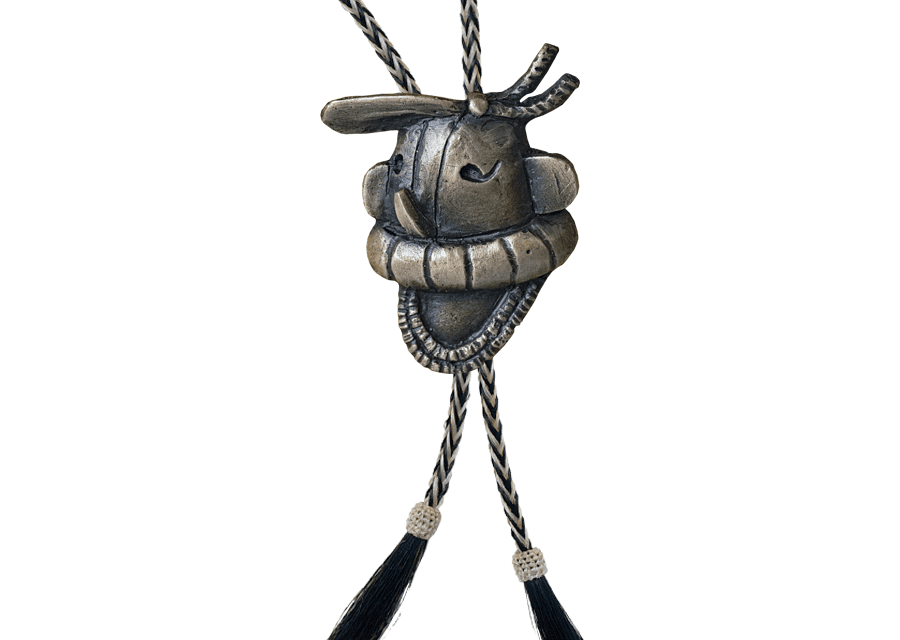As an artist, being asked to design the collector’s bolo for Prix de West is an honor in itself. For Paul Moore, being asked to design the 2020 Prix de West collector’s bolo on the heels of receiving both the Prix de West Purchase Award and Robert Lougheed Memorial Award in 2019, “It’s beyond anything I ever thought I’d get,” he said.
“I’m just tickled pink to receive any of them, let alone all of them,” Moore said about receiving the Prix de West honors in 2019 as well as the bolo commission this year. “For me, as well as for any artist in Prix de West, it’s a great honor just to be a participant of the show. The awards are just icing on the cake.”
Making the icing on the cake a bit sweeter for Moore is that it all takes place in his home state of Oklahoma – the place where his life was changed by first being exposed to Western art.
“Growing up in small communities (in Oklahoma), the only museum I ever visited – I never went to an art gallery or met an artist – the only museum I ever went to was the Cowboy Hall of Fame one time, and it changed my life,” Moore said, citing the National Cowboy Museum’s previous name. “So the Cowboy Hall was a major, major influence on me. It’s really why I am where I am today.”
When asked to design the 2020 collector’s bolo, Moore said he wanted to create an image that was related to the Southwest and very unique to previous years’ designs. He chose the Kokopelli — not only because of its popularity, but also because of the chance it afforded Moore to educate, which he said has always been a major goal with his art.
“The Kokopelli is probably the best known kachina and, at the same time, one of the least known,” Moore said. “Its popular image of the humpback flute player is taken from an Anasazi cave drawing and has little to do with the actual look of the real kachina.”
The actual Kokopelli kachina is associated with fertility, good luck, joy, seasonal change and plentiful rain leading to an abundant harvest, Moore said. “With its phallic mask, the Hopi’s legends say the Kokopelli carries unborn children on his back (thus the humpback) and distributes them to women; because of this, young women have a tendency to fear him,” he said. “Those that wish to become pregnant have a tendency to rub against him during ceremonies.”
As for the flute, Moore said, the Kokopelli’s music is believed to change winter to spring, bringing good rain and crops.
To order your 2020 collector’s bolo, visit the Museum Store.
A limited number of Paul Moore’s 2020 Prix de West collector’s bolos were finished in gold for presentation to Dally Horn Circle and Prix de West Patrons’ Circle members. Prix de West Society members receive special silver-finished collector’s bolos. Learn more about becoming a Prix de West Society member.
























